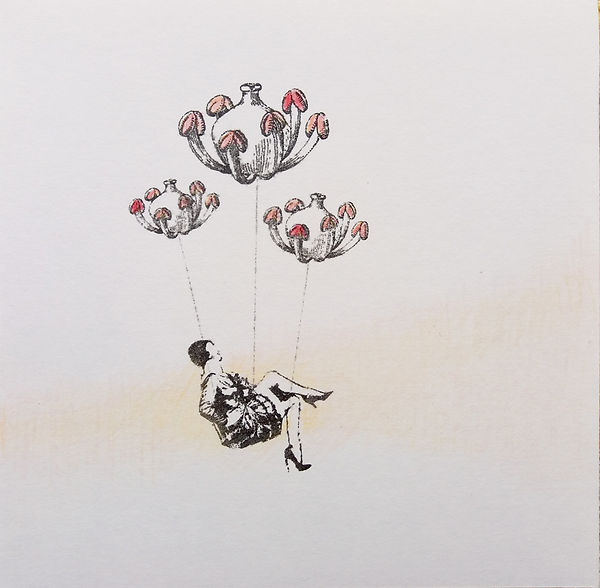KARINA
ZOTHNER

2017
Natural Sciences / Nando Argüelles Art Projects
25_Mar / 30_May 2017
Sexual dimorphism, a question of identity
Under the theme Natural Sciences, Nando Argüelles launches his new idea.
I have always been interested in establishing an identity through the concept of sexual dimorphism. As animals, I consider that sex is our engine and the underlying reason for all relationships between individuals, more or less explicitly. Males and females respond to a biological program that determines their roles and their interactions.
Relying on the theories of sexual dimorphism, according to which there are variations in the external physiognomy between males and females of the same species, I go a little further, looking for morphological analogies between different species that can suggest other types of identities and combinations. .
As in a construction, I play with the physical elements and with the feelings that may be associated with them, creating snapshots of impossible spring.
"Some are born to seek and others to be found"
The garden
Some are born to seek
and others to be found
ephemeral installation. Acetate on glass 200x162
NATURAL SCIENCES group show / March 25_May 31, 2017 / Nando Argüelles Art Projects. House El COleta 1959.
I like to play, like children play. I like to break things down and let them mix on their own.
Meanwhile, I sit, watch and listen. Sometimes, like in this garden, we search and sometimes, like in this garden, we allow ourselves to be found.
"Short Tales of a Minor Season"

Some are born to seek and others to be found
Tales of a Minor Season
13x13 mixed media/paper
transfer, pigment, resin, pencil

The Pollinators
Tales of a Minor Season
13x13 mixed media/paper
transfer, pigment, resin, pencil

Scaler
Tales of a Minor Season
13x13 mixed media/paper
transfer, pigment, resin, pencil

Pollinators II
Tales of a Minor Season
13x13 mixed media/paper
transfer, watercolor

pendants
Tales of a Minor Season
13x13 mixed media/paper
transfer, pigment, resin, pencil

Pollinators III
Tales of a Minor Season
13x13 mixed media/paper
transfer, pigment, resin, pencil

hanging from the sky
Tales of a Minor Season
13x13 mixed media/paper
transfer, pencil

bird's eye view
Tales of a Minor Season
13x13 mixed media/paper
transfer, pencil

taking care of my garden
Tales of a Minor Season
13x13 mixed media/paper
transfer, pencil
theoretical foundation
Technically, originally, unicellular species reproduced by splitting, generating individuals identical to each other, all females.
Among the biological advantages that it entails are its rapidity of division and its simplicity.
Instead, it has the great disadvantage of producing offspring without genetic variability. Natural selection cannot "choose" the best adapted individuals (since they are all the same) and these clonal individuals may not be able to survive an environment that changes in a hostile way, since they do not have the genetic information necessary to adapt to this. change. Therefore, this species could disappear, unless there is an individual carrying a combination to adapt to the new environment.
So nature looked for a solution; genetic exchange.
In all the more complex sexual species, the population consists of two sexes, only one of which is capable of producing offspring (with the exception of simultaneous hermaphrodites).
An additional cost is that males and females must seek each other out to mate, and sexual selection often favors characters that reduce the fitness of individuals.
Sexual selection can only be understood keeping in mind the concept of parental investment, considering this as the biological effort carried out by a couple of a species to conceive and raise an offspring.
It is generally accepted that parental effort, that is, the joint contribution of both sexes to the development of an offspring, falls to a greater extent on one of the sexes, usually the female.
At the same time the other sex, usually the male, contributes mainly in the earlier stage by investing in mating effort, effort to have a chance of mating with the few females.
Consequently, it is generally accepted that the parent that invests more in reproduction will be responsible for the choice of its partner to ensure its own investment, while the one that invests less must compete for access to copulation.
Males and females respond to a biological program that determines their roles and their interactions.